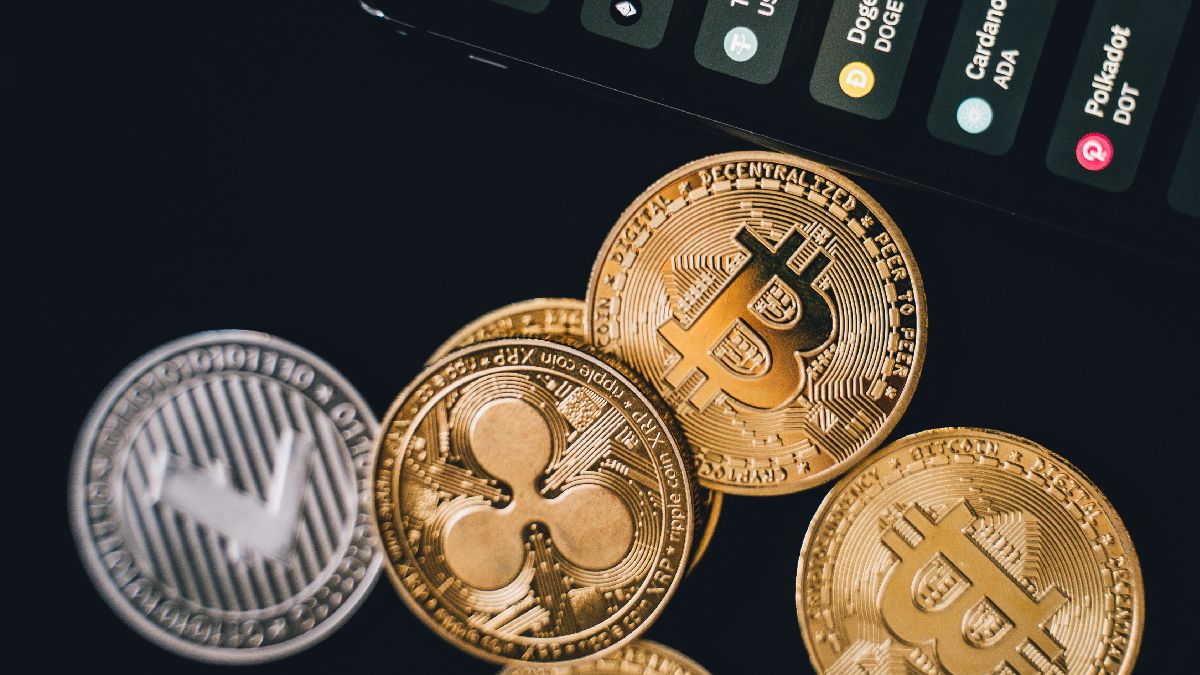Did you know that the liquidity of a market can be as crucial to traders as a good cup of coffee is to a morning meeting? In the fast-paced world of crypto day trading, understanding liquidity is essential for success. This article delves into the significance of liquidity, exploring its definition, importance, and impact on cryptocurrency prices. You'll discover the various types of liquidity, how to measure it, and the role exchanges play in providing it. We also discuss the risks associated with low liquidity, strategies for identifying liquid cryptocurrencies, and essential liquidity metrics for day traders. Additionally, you'll learn the relationship between market depth, volatility, and liquidity, and how these factors influence your trading strategies. Equip yourself with the insights from DayTradingBusiness to navigate the complex waters of crypto liquidity effectively.
What is liquidity in crypto day trading?
Liquidity in crypto day trading refers to how easily an asset can be bought or sold in the market without affecting its price. High liquidity means there are plenty of buyers and sellers, allowing trades to execute quickly at stable prices. In contrast, low liquidity can lead to slippage, where trades impact the asset's price significantly. For day traders, liquidity is crucial because it enables quick entry and exit from positions, maximizing profit potential and minimizing risks.
Why is liquidity important for crypto day traders?
Liquidity is crucial for crypto day traders because it ensures they can quickly buy and sell assets without significantly affecting the price. High liquidity means tighter spreads and better execution prices, allowing traders to enter and exit positions efficiently. It reduces the risk of slippage, which can eat into profits. In volatile markets, liquidity helps traders capitalize on short-term price movements while minimizing the impact of large orders. Overall, liquidity enhances trading strategies and can lead to more consistent profits.
How does liquidity affect cryptocurrency prices?
Liquidity significantly impacts cryptocurrency prices by influencing how easily assets can be bought or sold without affecting their market value. High liquidity means lower price volatility, allowing traders to execute large orders without drastic price changes. Conversely, low liquidity can lead to sharp price fluctuations, making it riskier for day traders. In liquid markets, small trades have minimal impact, while in illiquid markets, even minor transactions can cause significant price swings. Thus, day traders often prefer cryptocurrencies with higher liquidity to minimize risk and maximize profit potential.
What are the different types of liquidity in the crypto market?
The different types of liquidity in the crypto market include:
1. Market Liquidity: The ability to buy or sell assets without causing significant price changes. High market liquidity means you can execute trades quickly at stable prices.
2. Funding Liquidity: The availability of capital for trading. This includes how easily traders can access funds or leverage for their positions.
3. Order Book Liquidity: Refers to the depth of buy and sell orders in the order book. A deeper order book indicates more liquidity, allowing for larger trades with minimal slippage.
4. Exchange Liquidity: The overall liquidity provided by a specific exchange, influenced by trading volume and number of active users.
5. Asset Liquidity: The ease with which a specific cryptocurrency can be traded for cash or other assets. Highly liquid assets can be converted quickly, while illiquid ones may take longer and incur higher costs.
Understanding these types helps traders navigate the crypto market effectively.
How can traders measure liquidity in crypto assets?
Traders can measure liquidity in crypto assets by examining trading volume, order book depth, and bid-ask spreads. High trading volume indicates active buying and selling, while a deeper order book shows more buy and sell orders at various price levels, suggesting better liquidity. A narrower bid-ask spread means lower costs to enter and exit trades, reflecting higher liquidity. Additionally, tools like liquidity ratios and market depth charts can provide insights into an asset's liquidity status.
What role do exchanges play in crypto liquidity?

Exchanges provide the platform for buying and selling cryptocurrencies, directly impacting liquidity. High liquidity means traders can execute orders quickly at stable prices, minimizing slippage. Major exchanges attract more buyers and sellers, enhancing liquidity. This allows day traders to enter and exit positions easily, making it crucial for maximizing profits and managing risk effectively. In essence, exchanges are vital for maintaining an active market where liquidity thrives.
How does liquidity impact trading strategies in crypto?
Liquidity affects trading strategies in crypto by influencing the ease of entering and exiting positions. High liquidity allows traders to execute large orders without significantly impacting prices, enabling more precise strategies like scalping. Low liquidity can lead to slippage, making it risky to execute trades at desired prices. Traders often prioritize liquidity for strategies that require rapid execution and minimal price changes, while illiquid markets may favor long-term holds or limit orders to mitigate risk.
What are the risks of low liquidity in crypto trading?
Low liquidity in crypto trading can lead to increased volatility, making prices more susceptible to large swings. This can result in slippage, where trades execute at less favorable prices than expected. Additionally, low liquidity can cause difficulty in entering or exiting positions, potentially trapping traders in unfavorable conditions. It can also limit the ability to execute large trades without significantly impacting the market price, leading to losses. Overall, low liquidity heightens the risk of losses and complicates trading strategies.
How can traders find liquid cryptocurrencies?

Traders can find liquid cryptocurrencies by checking trading volume on exchanges, looking for coins listed on major platforms, and using liquidity metrics like order book depth. High trading volume often indicates better liquidity. Additionally, following market trends and using tools like CoinMarketCap or CoinGecko can help identify cryptocurrencies with active trading. Engaging in communities and forums can also provide insights into which assets are currently liquid.
What liquidity metrics should day traders consider?
Day traders should consider the following liquidity metrics:
1. Volume: Look at the trading volume over a specific period. Higher volume indicates better liquidity and easier entry and exit points.
2. Bid-Ask Spread: A narrower spread means lower costs for entering and exiting trades, reflecting better liquidity.
3. Order Book Depth: Analyze the order book to see how many buy and sell orders are at different price levels. Greater depth indicates stronger liquidity.
4. Market Impact: Assess how much a trade affects the price. Lower impact indicates higher liquidity.
5. Slippage: Monitor slippage, which reflects the difference between expected and actual trade prices. Less slippage suggests better liquidity.
6. Volatility: Consider the asset's volatility, as higher volatility can affect liquidity and trading strategies.
Focus on these metrics to gauge liquidity effectively in crypto day trading.
How does market depth relate to liquidity in crypto?
Market depth refers to the volume of buy and sell orders at various price levels in a cryptocurrency market. It directly impacts liquidity, which is the ease of buying or selling an asset without causing significant price changes. A deeper market with more orders means higher liquidity, allowing traders to execute large trades with minimal slippage. Conversely, shallow market depth can lead to higher volatility and price swings, making it harder to enter or exit positions efficiently. In crypto day trading, strong market depth is essential for quick trades and managing risk effectively.
## How Does Liquidity Impact Choosing the Best Crypto Markets for Day Trading?
To choose the best crypto markets for day trading, focus on high liquidity, as it ensures you can enter and exit positions quickly without significant price impact. Look for exchanges with a high trading volume, as they typically offer better spreads and less slippage. Additionally, consider market volatility, as it provides more trading opportunities. Lastly, assess the trading fees, as lower fees can significantly affect your profitability in day trading.
Learn more about: How to Choose the Best Crypto Markets for Day Trading
Learn about How to Choose the Best Crypto Markets for Day Trading
What tools can help assess crypto market liquidity?

To assess crypto market liquidity, consider using these tools:
1. Order Book Analysis: Platforms like Binance and Coinbase Pro provide detailed order books to gauge buy and sell orders.
2. Liquidity Metrics: Tools like CoinMarketCap and CoinGecko offer liquidity ratios and trading volume data for various cryptocurrencies.
3. Trading View: Utilize trading charts to analyze price movements and volume, highlighting liquidity trends.
4. Block Explorers: Use Ethereum or Bitcoin block explorers to see transaction volumes and patterns.
5. Liquidity Pools: Platforms like Uniswap or SushiSwap show available liquidity in decentralized exchanges (DEXs).
6. Market Depth Charts: Tools like CryptoCompare display market depth, indicating the liquidity at different price levels.
These tools will help you effectively gauge liquidity for informed day trading decisions.
How do liquidity pools work in decentralized finance (DeFi)?
Liquidity pools in DeFi allow users to lock their cryptocurrency into a smart contract, providing liquidity for trading pairs. Participants, known as liquidity providers, earn fees from trades that occur in the pool based on their contribution. When traders swap tokens, they access these pools, which help maintain price stability and reduce slippage. The more liquidity a pool has, the easier it is for large trades to happen without significantly impacting the price. Overall, liquidity pools are essential for enabling efficient trading and fostering a vibrant DeFi ecosystem.
What is the relationship between volatility and liquidity in crypto?
In crypto, volatility and liquidity are closely linked. High liquidity typically leads to lower volatility because it allows for larger trades without significantly impacting prices. Conversely, low liquidity can cause higher volatility, as even small trades can lead to sharp price swings. Day traders often seek liquid markets to minimize risk and execute trades efficiently, relying on stable prices to capitalize on short-term movements. Thus, a well-liquid market helps mitigate the effects of volatility.
How can high liquidity improve trading execution?
High liquidity improves trading execution by enabling faster order fills and reducing slippage. When liquidity is high, there are more buyers and sellers in the market, allowing trades to be executed at desired prices. This means you can enter or exit positions quickly without significantly impacting the market price. In crypto day trading, this is crucial for maximizing profits and minimizing losses, as it allows traders to react swiftly to market changes.
What strategies can enhance liquidity for crypto traders?
To enhance liquidity for crypto traders, consider these strategies:
1. Use Multiple Exchanges: Trade on various platforms to access different liquidity pools and price variations.
2. Limit Orders: Place limit orders to enter or exit positions at specific prices, helping you avoid slippage in volatile markets.
3. Market Making: Provide liquidity by placing buy and sell orders close to the market price, earning spreads in return.
4. Trade High-Volume Coins: Focus on cryptocurrencies with higher trading volumes, as they typically have better liquidity.
5. Participate in Liquidity Pools: Join decentralized finance (DeFi) liquidity pools to earn fees while providing liquidity.
6. Utilize Trading Bots: Implement bots to automate trading, executing orders swiftly in response to market conditions.
7. Time Your Trades: Trade during peak hours when market activity is highest to take advantage of better liquidity.
8. Stay Informed: Keep up with news and market trends to anticipate liquidity shifts and adjust your strategy accordingly.
By applying these strategies, you can improve your trading efficiency and reduce the impact of liquidity constraints.
Conclusion about The Role of Liquidity in Crypto Day Trading
In conclusion, understanding liquidity is essential for successful crypto day trading. It plays a critical role in determining price stability, execution efficiency, and overall market strategies. Traders must be aware of various liquidity metrics and the impact of exchanges on liquidity to make informed decisions. By leveraging tools and strategies to assess and enhance liquidity, traders can navigate the crypto market more effectively. For more insights into maximizing trading success, consider the resources available through DayTradingBusiness.